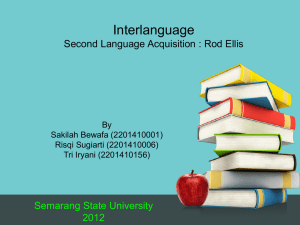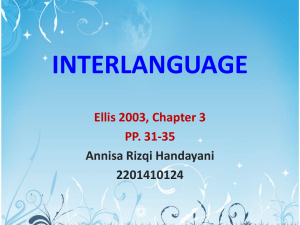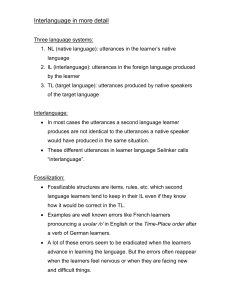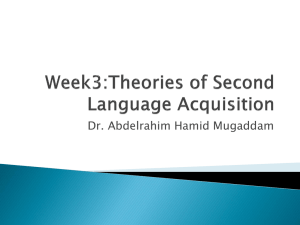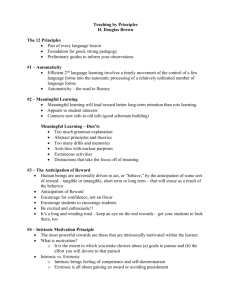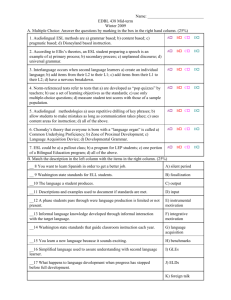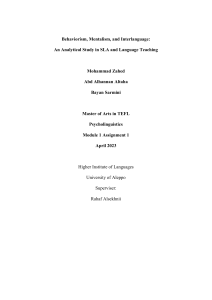Chapter 3 - WordPress.com
advertisement
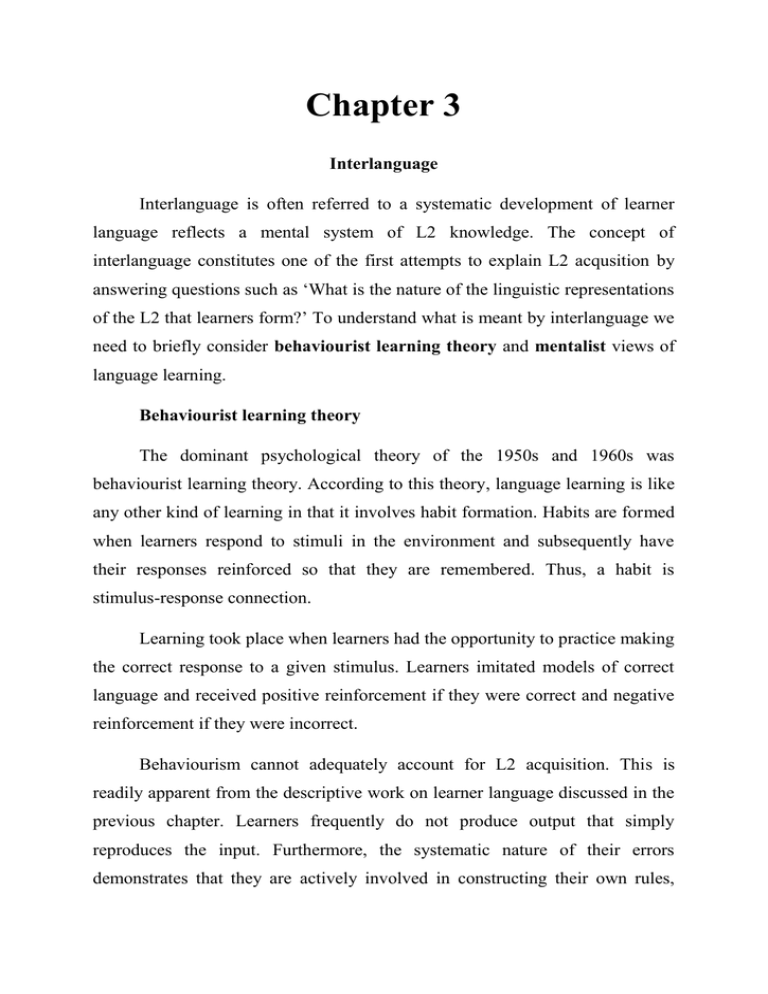
Chapter 3 Interlanguage Interlanguage is often referred to a systematic development of learner language reflects a mental system of L2 knowledge. The concept of interlanguage constitutes one of the first attempts to explain L2 acqusition by answering questions such as ‘What is the nature of the linguistic representations of the L2 that learners form?’ To understand what is meant by interlanguage we need to briefly consider behaviourist learning theory and mentalist views of language learning. Behaviourist learning theory The dominant psychological theory of the 1950s and 1960s was behaviourist learning theory. According to this theory, language learning is like any other kind of learning in that it involves habit formation. Habits are formed when learners respond to stimuli in the environment and subsequently have their responses reinforced so that they are remembered. Thus, a habit is stimulus-response connection. Learning took place when learners had the opportunity to practice making the correct response to a given stimulus. Learners imitated models of correct language and received positive reinforcement if they were correct and negative reinforcement if they were incorrect. Behaviourism cannot adequately account for L2 acquisition. This is readily apparent from the descriptive work on learner language discussed in the previous chapter. Learners frequently do not produce output that simply reproduces the input. Furthermore, the systematic nature of their errors demonstrates that they are actively involved in constructing their own rules, rules that sometimes bear little resemblance to the patterns of language modeled in the input. In short, learning is not just a response to external stimuli. A mentalist theory of language learning In the 1960s and 1970s a mentalist theory of first language (L1) acquisition emerged. According to this theory: 1. Only human being are capable of learning language 2. The human mind is equipped with a faculty for learning language, referred to as Language Acquisition Device. 3. This faculty is the primary determinant of language acquisition. 4. Input is needed, but only to ‘trigger’ the operation of the language acquisition device. What is ‘interlanguage’? The term ‘interlanguage’ was coined by the American linguist, Larry Selinker, in recognition of the fact that L2 learners construct a linguistic system that draws, in part, on the learner’s L1 but is also different from it and also from the target language. The concept of interlanguage involves the following premises about L2 acquisition: 1. The system of rules is viewed as a ‘mental grammar’ and is referred to as an ‘interlanguage’. 2. The learner’s grammar is permeable. That is, the grammar is open to influence from the outside. 3. The learner’s grammar is transitional. Learners change their grammar from one time to another by adding rules, deleting rules, and restructuring the whole system. 4. The systems learners construct contain variable rules. That is, the learners are likely to have competing rules at any one stage of development. 5. Learners employ various learning strategies to develop their interlanguages. The different kinds of errors learners produce reflect different learning strategies. 6. The learner’s grammar is likely to fossilize. This concept of interlanguage offers a general account of how L2 acquisition takes place. A computational model of L2 acquisition The concept of interlanguage can be viewed as a metaphor of how L2 acquisition takes place. It implies that the human mind functions like a computer. The learner is exposed to input, which is processed in two stages. First, parts of it are attended to and taken into short-term memory. Second, some of the intake is stored in long-term memory as L2 knowledge. Input intake FIGURE 3.1 L2 knowledge output A computational model of L2 acquisition Figure 3.1 represents the basic computational metaphor that has grown out of ‘interlanguage’ and that informs much of SLA. As we shall shortly see, this basic model of L2 acquisition can be elaborated in a number of ways. For example, a component labeled ‘social context’ might be added to explain how the nature of the input varies from one setting to another.
